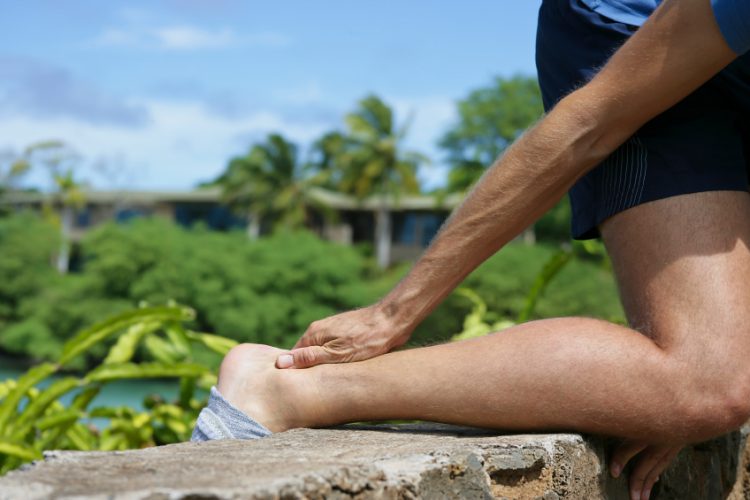
Achilles tendinitis: tendinitis of the Achilles tendon

Definition
Achilles tendinitis is an irritation with or without inflammation at the attachment point of the calf behind the heel. When the calf contracts, it pulls on the heel by bringing the foot in the pointed position when sitting or lying down and on tiptoe when standing.
Causes
Repeated overuse of this muscle, for example running or sports involving jumps or hiking can lead to an inflammation or a partial to complete tear of the Achilles tendon. Too much pressure such as from wearing ski boots can also cause this type of injury.
Characteristics
Often people will experience pain while climbing stairs and an unpleasant stretching sensation while going down stairs. The squatting position and especially getting up from this position is risky. Pain can especially be felt during activity and can persist for a certain time afterwards. The first steps out of bed in the morning are frequently painful. In addition, the simple pressure of blankets, stockings or shoes can be unpleasant.
Prevention
It is important to avoid repeated movements, properly proceed in your sports outings and training sessions and apply ice as well as allow for a rest period when symptoms appear.
Physical therapy treatment
When the pain persists, the patient should consult a physical therapist in order to avoid the condition from getting worse and becoming chronic. First of all, the physical therapist will assess the severity of the condition and if needed, will refer to the doctor for additional examinations. A complete cessation of the sport may be necessary.
It is first necessary to reduce the inflammation present at the level of the tendon by treatments such as electrotherapy, for example, ultrasound. Muscle relaxation techniques at the level of the calf and the foot can be relevant. In addition, the mobility of the ankle and foot can be affected, therefore manual therapy can be interesting in this case. Taping is another interesting method to reduce stress on the tendon. Of course, all of these methods should be accompanied by strengthening exercises (which are also available on our website as a reference video).
Data on cortisone injections is rather negative with regards to this type of condition. Indeed, there appears to be a risk of rupture, which can lead to surgery and longer rehabilitation afterwards. At Physio Atlas, we will be happy to accompany you in your recovery process and resume your sports activities.


